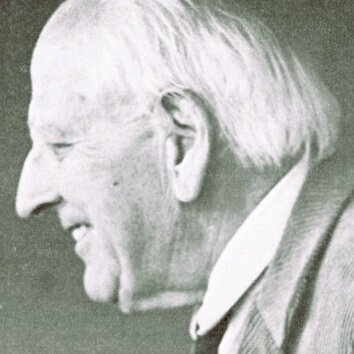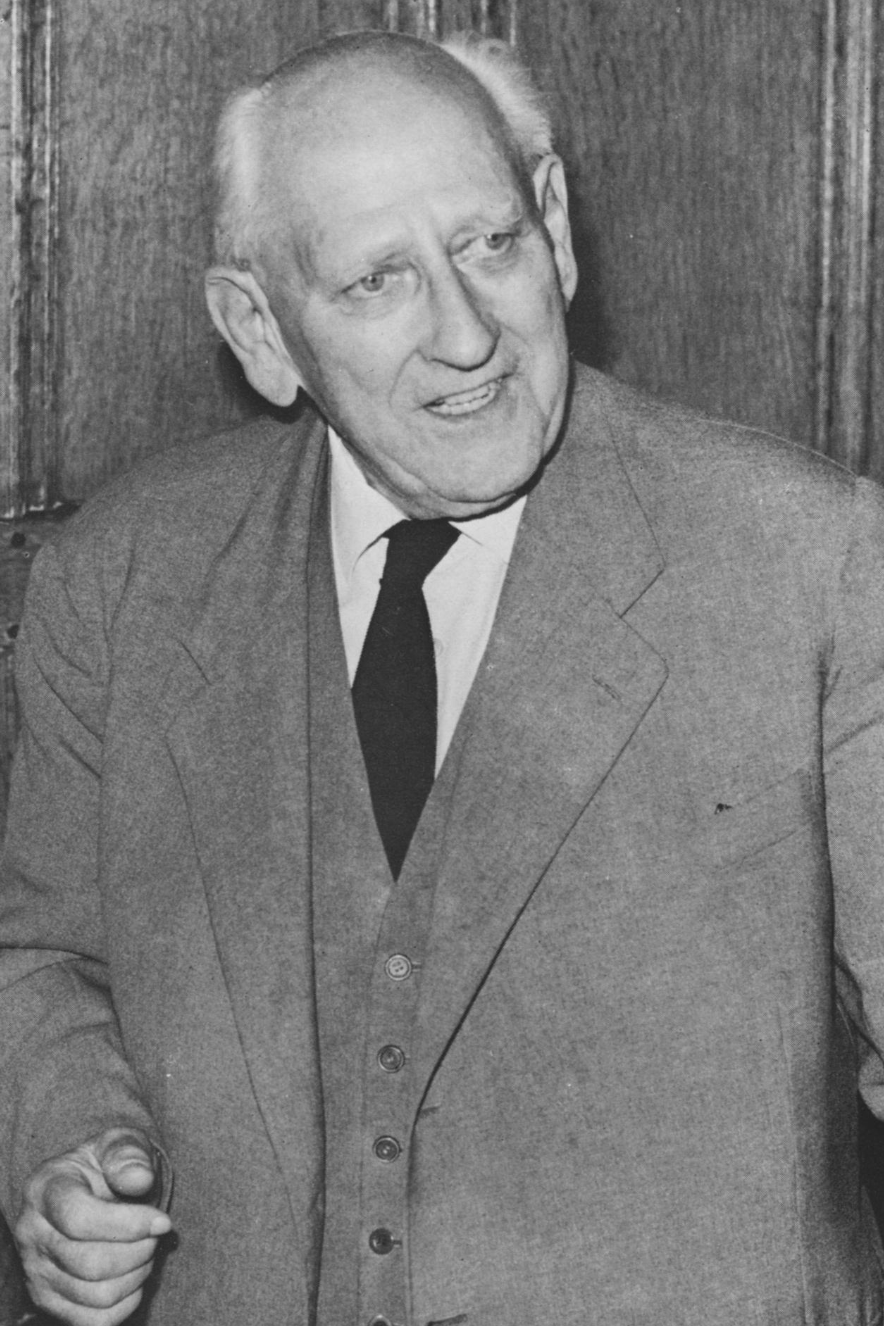Paul Demiéville

Paul Demiéville (13 Sept. 1894, Lausanne, Switzerland – 23 March 1979, Paris, France) was a Swiss-French Sinologist and Orientalist known for his studies of the Dunhuang manuscripts, his contribution to Buddhist studies, his translations of Chinese poetry, and his role as co-editor — J. J. L. Duyvendak and later A. F. P. Hulsewé — of the influential Orientalist review T’oung Pao from 1945 — after Paul Pellliot’s passing — to 1976.
After studying English literature history under George Saintsbury at Edinburgh University and studying musicology (with an essay on the suite style in the 17th and 18th centuries) at Paris University, he opted for Chinese language at London King’s College in 191. Back to Paris, he attended École des Langues Orientales Vivantes and later Collège de France with the guidance of Édouard Chavannes (1865−1918) in Chinese and Sylvain Lévi (1863−1935) in Sanskrit.
From February 1920 to June 1921, Demiéville stayed at EFEO Center in Hanoi as a “resident” or a “temporary member of EFEO”, depending on sources, browsing through its “impressive library”, learning Vietnamese, joining then-director of EFEO Henri Maspero (1883 – 1945)in his field study of the communal rituals and celebrations of the Vietnamese farmers, and traveling by car to Angkor and spending “an unforgettable week” among the Khmer temples in July-August 1920. Finding Maspero’s successor Léonard Aurousseau “quite a difficult fellow”, he left for Beijing in June 1921, not before furthering his own research on rural Vietnam’s customs and traditions, publishing his notes later on in Tokyo. [see Yves Hervouet, “Paul Demiéville et l’Ecole française d’Extrême-Orient”, BEFEO 69, 1981: 1 – 29]. From 1924 to 1926, he gave a course in Sanskrit and philosophy at Amoy (Xiamen) University.
At Sylvain Lévi’s suggestion, he moved to Tokyo where he joined the Maison franco-japonaise (Franco-Japanese House) in 1926, becoming its director as well as the editor-in-chief of Hōbōgirin 法寶義林, an encyclopedic dictionary of Buddhism initiated by Prof. Lévi and Japanese scholar Takakusu Junjiro (1866−1945). He was one of the first Western sinologists to learn Japanese instead of Manchu to enhance their command in Chinese studies. Back to France in 1930 (obtaining French citizenship following year), he taught Chinese at Ecole des Langues Orientales. After World War II, he became director of Buddhist studies at Ecole Pratique des Hautes Etudes (EPHE) from 1945, and replaced Henri Maspero as Chair of Chinese language and literature at Collège de France from 1946 until his retirement in 1964.
Elected President of the Académie des inscriptions et belles-lettres in 1953, he joined then-director of EFEO Jean Filliozat for an “inspection tour” of the school branches in India, Thailand, Vietnam and Cambodia, where he could visit again the site of Angkor. As early as 1925, while exploring the Japanese ancient Rinyu musical and dance style, he proposed that this style called “cham” originated in fact from Funan, thus Cambodia, via China. Out of his interest in the ancient Khmer civilization, and in respectful homage to the sinologist who had given the first comprehensive edition of Zhou Daguan’s Record of Zhenla, The Land and Its People in 1901, Paul Demiéville worked with George Coedès on the publication of Paul Pelliot’s uncompleted new version of the latter’s Mémoires sur les Coutumes du Cambodge de Tcheou Ta-Kouan (1951).
Commenting on the Chinese unconventional monk Lin-tsi (Linji), Paul Demiéville noted in his later years: “II n’y a pas d’outré-monde, et le monde, c’est nous-mêmes, c’est cet être absolu, à la fois indéfinissable et le plus quotidien que Lin-tsi (Linji) appelle ’ l’homme vrai ‘[…] Contrairement à l’Inde, la Chine se cramponne au réel; il n’y a pas de pensée plus terre à terre. C’est pourquoi cette pensée nous déconcerte, en raison même de sa simplicité. Mais dirai-je que lorsqu’on y a goûté les abstractions paraissent fades”. [“There is no otherworld, and the world is ourselves, this absolute being, both indefinable and utterly mundane that Lin-tsi (Linji) calls ‘the true man’ […] Unlike India, China clings to reality; one cannot find more down-to-earth way of thinking. It is its very simplicity that puzzles us, yet I would say that once one has got a taste of it, abstractions seem bland.”
Portrait of Paul Demiéville in Jacques Gernet, T’oung Pao, op.cit.
Selected Publications
- [review] “E. Leumann : Maitreya-samiti, das Zukunftsideal der Buddhisten”, BEFEO 20, 1920: 158 – 170.
- [review] “G. K, Nariman : Literary History of Sanskrit Buddhism”, BEFEO 20, 1920: 135 – 137.
- [1922 conference transcript found by P.D.‘s daugther Jeanne-Marie Allier] “Un itinéraire de Chang-hai à T’ien-tsin” (1922?), Études chinoises. 漢學研究 2003 22, p. 159 – 183.
- [review] “Hou Che. Tchang Che-tchai sien cheng nien p’ou”, BEFEO 23, 1923: 478 – 489.
- “Les versions chinoises du Milindapanha” [“Chinese Versions of the Milinda Panha”], BEFEO 24, 1924: 1 – 258.
- [review] “Che-yin Song Li Ming-tchong Ying tsao fu che”, BEFEO 25, 1925: 213 – 264.
- “La musique čame au Japon”, in Etudes Asiatiques, Paris, G. Van Oest/PEFEO, Vol. 1, 1925: 199 – 226.
- “Notes d’archéologie chinoise”, BEFEO 25, 1925: 449 – 467.
- “Sur la mémoire des existences antérieures”, BEFEO 27, 1927: 283 – 298.
- “L’état actuel des études bouddhiques”, Revue de Théologie et de Philosophie ns 15 – 62, 1927: 43 – 65.
- “Les Chansons du Che King au Tonkin”, Mélanges Kanô, Kyoto, 1928, pp. 5 – 11.
- “Sur l’authenticité du Ta tch’eng k’i sin louen” [“On the Authenticity of the Da cheng qi xin lun 大乘起新論”], Bulletin de la Maison Franco-Japonaise, vol. 2, no. 2, 1929, pp. 1 – 78.
- [ editor with Sylvain Lévi, Takakusu Junjiro, Watanabe Kaigyoku, Otani and Wada Foundation] Hobogirin : dictionnaire encyclopédique de bouddhisme d’après les sources chinoises et japonaises, , Tokyo, Maison franco-japonaise, 1929 (1st vol.), 1930 (2d); 1937 (3d), 1931 (supplement).
- “Iconography and History”, in The Twin Pagodas of Zayton: A Study of Later Buddhist Sculpture in China, Harvard-Yenching Institute Monograph Series, vol. 2. Cambridge, Harvard-Yenching Institute, 1935, pp. 27 – 95.
- [contribution theme] “Philologie bouddhique”, Annuaires de l’École pratique des hautes études, numerous cont. 1946 – 1956.
- “Henri Maspero et l’avenir des études chinoises”, T’oung Pao 2d ser. 38 – 1, 1947:16 – 42.
- “À propos du Concile de Vaiśāli” [“Regarding the Council of Vaiśāli”]. T’oung Pao 40, 1951, pp. 239 – 296.
- “La Yogācārabhūmi de Sangharaksa”, BEFEO 44 – 2, 1951: 339 – 436.
- [text preparation with George Coedès] Oeuvres Posthumes de Paul Pelliot, Mémoires sur les Coutumes du Cambodge de Tcheou Ta-Kouan. Version nouvelle suivie d’un commentaire inachevé. Paris: Librairie d’Amrique et d’Orient, 1951; repr. Maisonneuve-Larose, 2003.
- Le Concile de Lhasa: Une controverse sur la quiétisme entre bouddhistes de l’inde et de la Chine au VIIIème s. [The Council of Lhasa: A controversy on quietism between Buddhists of India and China in the 8th c.]. Paris: Bibl. de l’Institut des Hautes Études chinoises, 1952.
- “Le bouddhisme : les sources chinoises”, in L. Renou, J. Filliozat et al., L’Inde classique, t. 2, Paris, EFEO, 1953, p. 398 – 463.
- “Letteratura cinese”, in La civiltà dell’Oriente, II, Rome, 1957, p. 861 – 997.
- [ed.] Anthologie de la poésie chinoise classique, Paris, Gallimard, 1962.
- [preface to] Luce Boulnois, La route de la soie, Paris, Arthaud (coll. “Signes des Temps”), 1963, 320 p.
- Matériaux pour l’enseignement élémentaire du chinois, écriture, transcription, langue parlée nationale, Paris, Adrien Maisonneuve, 1963 (2d ed.).
- “Manuscrits chinois de Touen-Houang à Leningrad”, T’oung Pao 2d ser. 51−4÷5, 1964: 355 – 376.
- “La montagne de l’art littéraire chinois”, France-Asie 189, Automne 1965.
- “Aperçu historique des études sinologiques en France,” Acta Asiatica 11 (1966), 56 – 110.
- [preface to] Chen Fen, Récits d’une vie fugitive: mémoires d’un lettré pauvre, Jacques Reclus (tr.), Paris, Gallimard, 1968, ISBN13 978 – 2070269044.
- “Récents travaux sur Touen-houang”, T’oung Pao 56, p. 1 – 95.
- “Présentation d’un poète”, T’oung Pao 2d ser. 56−4÷5, 1970: 241 – 261 [on Sie Ling-yun].
- “Le Recueil de la salle des patriarches, ‘Tsou-t’ang tsi’ ”, T’oung Pao, 2nd ser. 56−4÷5, 1970: 262 – 286.
- [with Jao Tsung‑I), Airs de Touen-houang (Touen-houang k’in). Textes à chanter des VIIIe-IXe siècles, Paris, CNRS, 1971.
- Entretiens de Lin-Tsi, traduits du chinois avec commentaires, Paris, Fayard, 1972, 254 p.
- “ ‘Adieu maman’ ”, Bulletin of the School of Oriental and African Studies (BSOAS) 36 – 2, In Honour of Walter Simon, 1973: 271 – 286.
- Choix d’études sinologiques (1921−1970), Leiden: Brill, 1973, 649 p.
- Choix d’études bouddhiques, Leiden: E. J. Brill, 1973, 509 p.
- [with Hubert Durt & Anna Seidel] Répertoire du Canon bouddhique sino-japonais, édition de Taishô (Thaisô shinshû Daizokyo) (Fascicule annexe du Hôbôgirin,dictionnaire encyclopédique du bouddhisme d’après les sources chinoises et japonaises), Paris/Tokyo, Maisonneuve/Maison du Japon, 1978 (2d. rev. ed.), 320 p.
- [preface to] Peintures monochromes de Dunhuang (Dunhuang baihua), Tsong-yi Jao & Pierre RYCKMANS eds., Paris, EFEO, 1978, 176 p.
- L’Oeuvre de Wang le Zélateur (Wang Fantche), suivie des Instructions domestiques de l’Aïeul (T’ai-kong kia-kiao): Poèmes populaires des T’ang (VIIIe-Xe siècles, édités, traduits et commentés d’après des manuscrits de Touen-houang), Paris, Collège de France, Institut des hautes études chinoises, 1982, 915 p.
- [posthumously published by Jean-Pierre Diény], Poèmes chinois d’avant la mort, Paris: L’Asiatheque, 1984, 208 p. ISBN: 9782901795261.
see also
- Madeleine Paul-David, “Paul Demiéville (1894−1979)”, Arts Asiatiques 36, 1981: 67 – 68.
- Jacques Gernet, “Notice sur la vie et les travaux de Paul Demiéville, membre de l’Académie”, Comptes rendus des séances de l’Académie des Inscriptions et Belles-Lettres, 130ᵉ année, n. 3, 1986: 595 – 607.
- Jacques Gernet, “Paul Demiéville (1894−1979)”, T’oung Pao 2d ser. 65÷1−3, 1979: 1 – 9.
- Yves Hervouet, “Bibliographie de Paul Demiéville (Suite)”, T’oung Pao 2d ser. 65÷1−3, 1979: 9 – 12.
- Pierre-Etienne Will, “French Sinology”, Journal of Chinese History 7(2), Nov. 2022:1 – 50.

